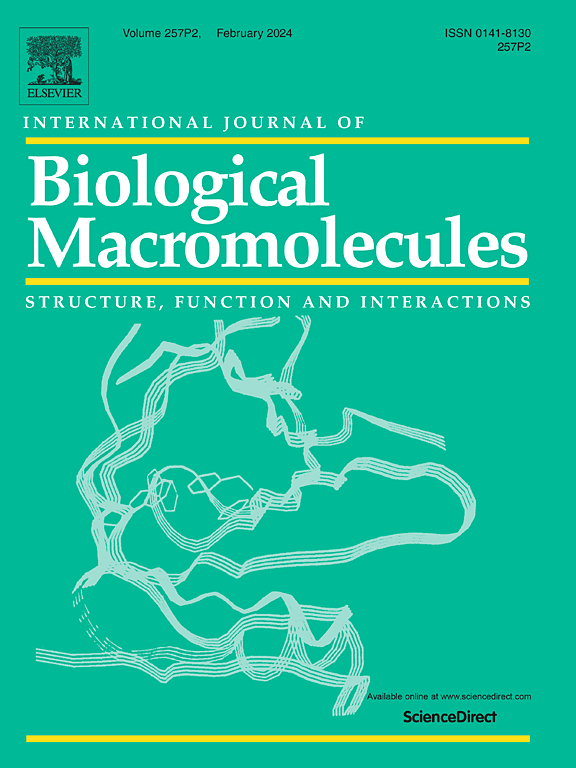卵巢癌新预后蛋白特征的发展:AQP5蛋白和CTDP1蛋白的分子结构和免疫功能
IF 8.5
1区 化学
Q1 BIOCHEMISTRY & MOLECULAR BIOLOGY
International Journal of Biological Macromolecules
Pub Date : 2025-04-25
DOI:10.1016/j.ijbiomac.2025.143474
引用次数: 0
摘要
卵巢癌是一种严重的妇科恶性肿瘤,早期识别预后标志物对改善临床结果至关重要。水通道蛋白5 (AQP5)和细胞周期调节蛋白CTDP1被认为是潜在的预后蛋白标志物,但其具体的分子结构和免疫功能研究尚不深入。本研究旨在探讨AQP5和CTDP1的分子结构及其在卵巢癌中的免疫功能,评价其作为预后标志物的潜力,为卵巢癌的诊断和疗效监测提供新的思路。采用Cox回归分析和LASSO回归构建风险预后模型,并进行初步验证。最后,通过细胞培养和高分辨率基因表达分析研究AQP5和CTDP1的表达及其在免疫微环境中的作用。结果表明,AQP5和CTDP1在卵巢癌细胞系中高表达,与肿瘤免疫侵袭密切相关。基于GRN的免疫微环境分析显示它们与肿瘤相关免疫细胞呈正相关。通过构建的风险模型,AQP5和CTDP1显著影响患者预后,提示其作为预后标志物的潜力。本文章由计算机程序翻译,如有差异,请以英文原文为准。
Development of novel prognostic protein signatures in ovarian cancer: Molecular structure and immune function of AQP5 protein and CTDP1 protein
Ovarian cancer is a serious gynecological malignancy, and early identification of prognostic markers is critical to improve clinical outcomes. Aquaporin 5 (AQP5) and cell cycle regulatory protein CTDP1 are considered as potential prognostic protein markers, but their specific molecular structure and immune function have not been thoroughly studied. The aim of this study was to investigate the molecular structure of AQP5 and CTDP1 and their immune function in ovarian cancer, to evaluate their potential as prognostic markers, and to provide new ideas for the diagnosis and efficacy monitoring of ovarian cancer. Cox regression analysis and LASSO regression were used to construct the risk prognosis model, and the preliminary verification was carried out. Finally, cell culture and high-resolution gene expression analysis were used to investigate the expression of AQP5 and CTDP1 and their roles in the immune microenvironment. The results showed that AQP5 and CTDP1 were highly expressed in ovarian cancer cell lines and were closely related to tumor immune invasion. The immunomicroenvironment analysis based on GRN showed that they showed a positive correlation with tumor-related immune cells. Through the constructed risk model, AQP5 and CTDP1 significantly affect patient prognosis, suggesting their potential as prognostic markers.
求助全文
通过发布文献求助,成功后即可免费获取论文全文。
去求助
来源期刊
CiteScore
13.70
自引率
9.80%
发文量
2728
审稿时长
64 days
期刊介绍:
The International Journal of Biological Macromolecules is a well-established international journal dedicated to research on the chemical and biological aspects of natural macromolecules. Focusing on proteins, macromolecular carbohydrates, glycoproteins, proteoglycans, lignins, biological poly-acids, and nucleic acids, the journal presents the latest findings in molecular structure, properties, biological activities, interactions, modifications, and functional properties. Papers must offer new and novel insights, encompassing related model systems, structural conformational studies, theoretical developments, and analytical techniques. Each paper is required to primarily focus on at least one named biological macromolecule, reflected in the title, abstract, and text.

 求助内容:
求助内容: 应助结果提醒方式:
应助结果提醒方式:


